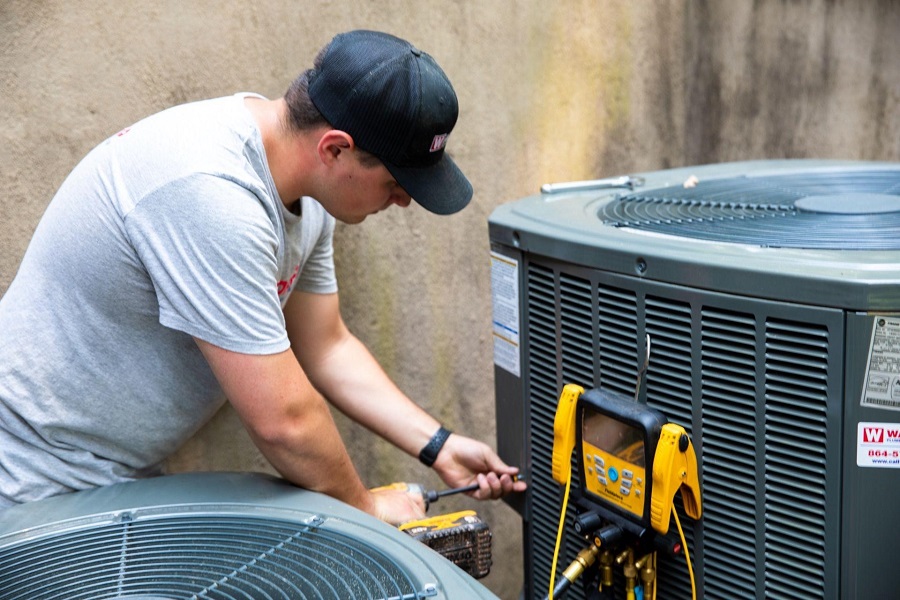
Emergency Heating Repair vs. Regular Maintenance: What’s the Difference?
Heating systems emergency repair in Indianapolis, IN, is often a last-minute scramble that homeowners dread. The contrast between emergency repairs and regular maintenance can significantly impact your heating system’s efficiency, lifespan, and overall cost. Here’s a detailed look at how these two approaches differ and why regular maintenance should be a priority.
Scheduled vs. Unscheduled Service: How Often Should You Check Your System?
Regular Maintenance
Heating systems should undergo maintenance at least once a year, preferably before the onset of the colder months. This annual check-up ensures that the system is ready to perform efficiently throughout the winter. Some HVAC professionals recommend bi-annual check-ups—once in the spring and once in the fall—to ensure the system is in peak condition year-round. This more frequent schedule can be especially beneficial for homes in regions with extreme temperature fluctuations.
Emergency Repairs
Unlike scheduled maintenance, emergency repairs occur unpredictably. They are reactive responses to sudden system failures or malfunctions, which can happen at any time and often during the most inconvenient moments, like during a winter storm when the heating system is under the most stress. Because these situations are unplanned, they often come with a sense of urgency and stress, as well as higher costs.
Routine Maintenance Tasks: What Does Regular Service Include?
Regular Maintenance
Regular maintenance involves a thorough inspection and cleaning of the heating system. During a maintenance visit, technicians will:
- Check and replace air filters: Clean air filters improve air quality and system efficiency.
- Inspect and clean the furnace or heat pump: Removing dirt and debris ensures the system runs smoothly.
- Test the thermostat for accuracy: Ensures the system responds correctly to temperature settings.
- Lubricate moving parts: Reduces friction and wear on the system’s components.
- Check electrical connections: Ensures all connections are secure and functioning properly.
- Inspect ductwork for leaks: Prevents loss of heated air, improving efficiency.
- Measure airflow and system pressure: Ensures the system is operating within optimal parameters.
These tasks are designed to keep the system running efficiently and to catch any potential issues early.
Emergency Repairs
Emergency repairs are more focused and urgent. They typically address specific problems that have caused the heating system to fail. This could include:
- Replacing a broken thermostat: Essential for system control and operation.
- Fixing a malfunctioning blower motor: Critical for distributing heated air throughout the home.
- Addressing electrical issues: Ensures safe operation and restores system function.
- Repairing or replacing the heat exchanger: Vital for the safe production of heat.
- Fixing gas leaks or addressing other safety concerns: Ensures the safety of the household.
While these repairs are necessary to restore function, they often don’t address underlying issues that could have been caught during regular maintenance.
Cost Analysis: Maintenance vs. Emergency Repairs
Regular Maintenance
The cost of regular maintenance is generally predictable and budget-friendly. Annual maintenance plans can range from $100 to $300, depending on the complexity of the system and the extent of the services provided. These costs are relatively low compared to emergency repairs and are often seen as an investment in the system’s longevity and efficiency. Many HVAC companies offer maintenance contracts that include discounts on repairs and priority service, adding even more value.
Emergency Repairs
Emergency repairs can be significantly more expensive. They often involve higher labor costs, especially if services are needed after hours or during weekends and holidays. Additionally, the cost of parts and the urgency of the service can add up. It’s not uncommon for emergency repairs to cost anywhere from $300 to $1,000 or more, depending on the severity of the issue. These unplanned expenses can strain a household budget, making regular maintenance a more financially sound option.
System Longevity: How Maintenance Extends Your Heating System’s Life
Regular Maintenance
Consistent maintenance can extend the lifespan of your heating system by several years. By keeping the system clean and running efficiently, you reduce the wear and tear on its components. Regular tune-ups help identify and address minor issues before they escalate into major problems, ensuring the system runs smoothly and reliably. A well-maintained system can often last 15 to 20 years or more, providing significant long-term savings.
Emergency Repairs
While emergency repairs can get your system back up and running, they are often more of a band-aid solution rather than a comprehensive fix. Frequent emergency repairs can indicate underlying issues that regular maintenance would have prevented. Over time, the lack of consistent upkeep can lead to a shortened system lifespan and more frequent breakdowns. Systems that are not regularly maintained may only last 10 to 15 years, leading to earlier replacement costs.
Preventing Emergencies: Proactive Measures for Homeowners
How to Avoid Emergencies:
- Annual Maintenance: Schedule regular check-ups to catch potential problems early. This is the single most effective way to prevent emergency situations.
- Filter Replacement: Change filters regularly to ensure proper airflow and reduce strain on the system. Most filters should be replaced every 1 to 3 months, depending on usage and air quality.
- System Upgrades: Consider upgrading old components before they fail completely. This proactive approach can prevent unexpected breakdowns and improve system efficiency.
- Thermostat Management: Use a programmable thermostat to reduce system strain during peak usage times. Proper thermostat management can also lead to energy savings.
- Professional Inspections: Hire qualified HVAC professionals to perform thorough inspections and maintenance. Their expertise can identify issues that might be missed by the average homeowner.
By following these preventative measures, you can minimize the likelihood of unexpected system failures and ensure your heating system operates efficiently throughout its lifespan.
Key Takeaways: The Benefits of Regular Heating System Maintenance
Regular maintenance and emergency repairs play distinct roles in the care of your heating system. While emergency repairs are essential for addressing immediate issues, regular maintenance is crucial for preventing these issues from arising in the first place. The benefits of routine maintenance—such as lower costs, improved system longevity, and increased efficiency—far outweigh the sporadic, high costs associated with emergency repairs.
Prioritizing regular maintenance over waiting for emergencies can save you money, extend the life of your heating system, and provide peace of mind knowing your home will stay warm and comfortable throughout the winter months. Take proactive steps now to ensure your heating system is ready to handle whatever the season throws your way.



